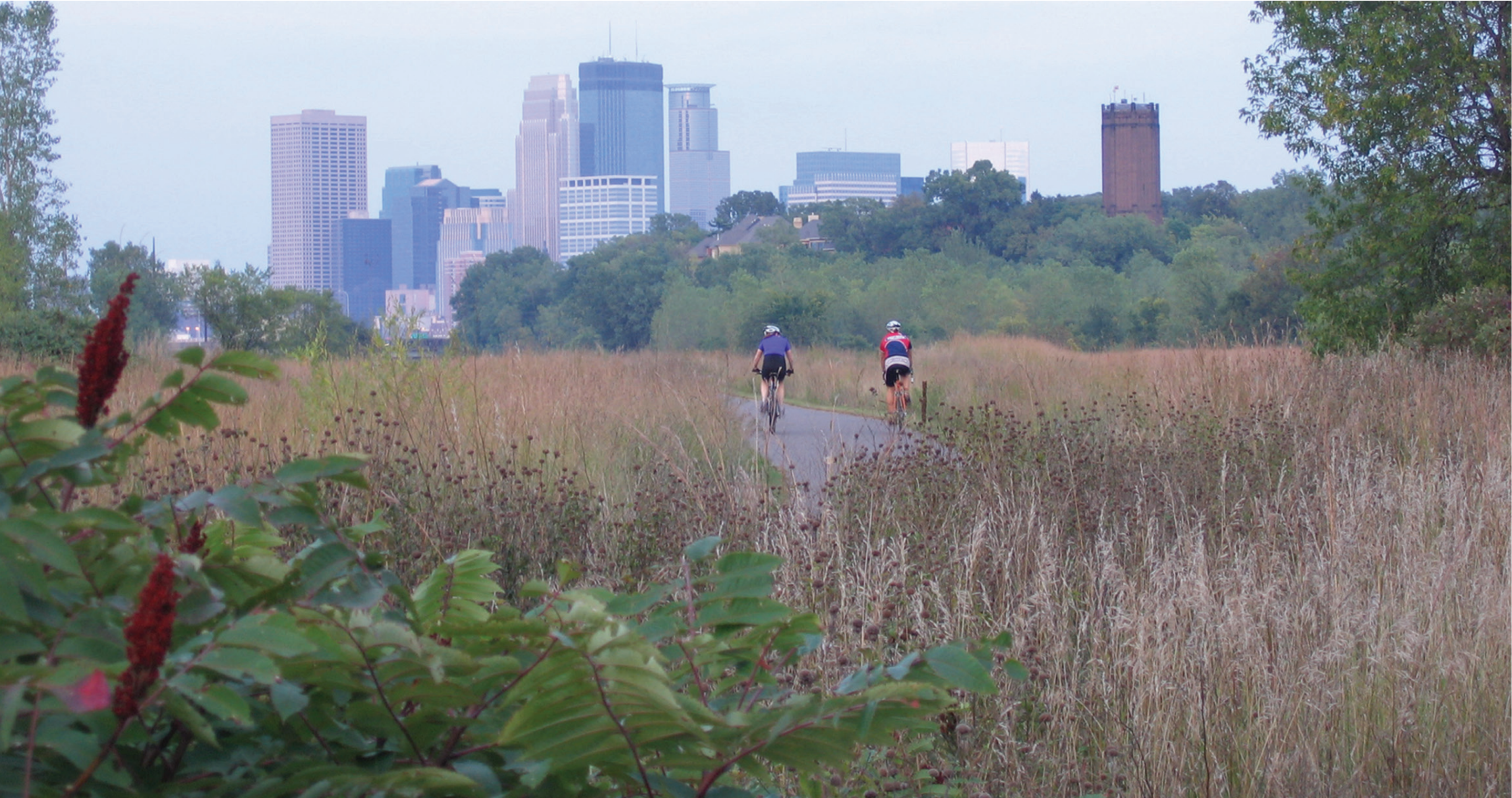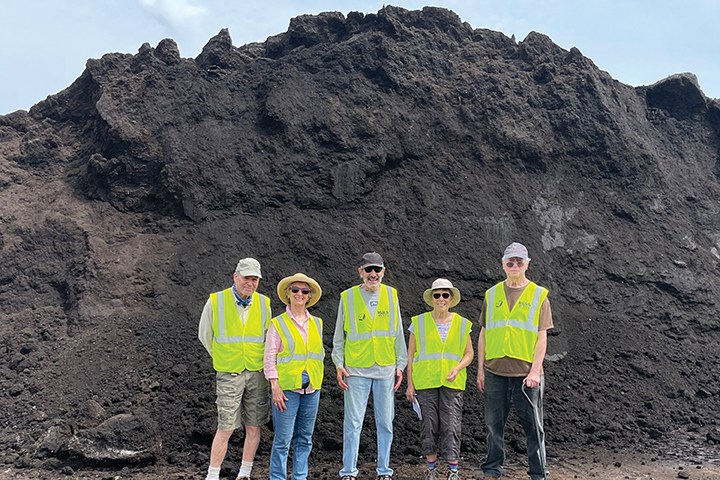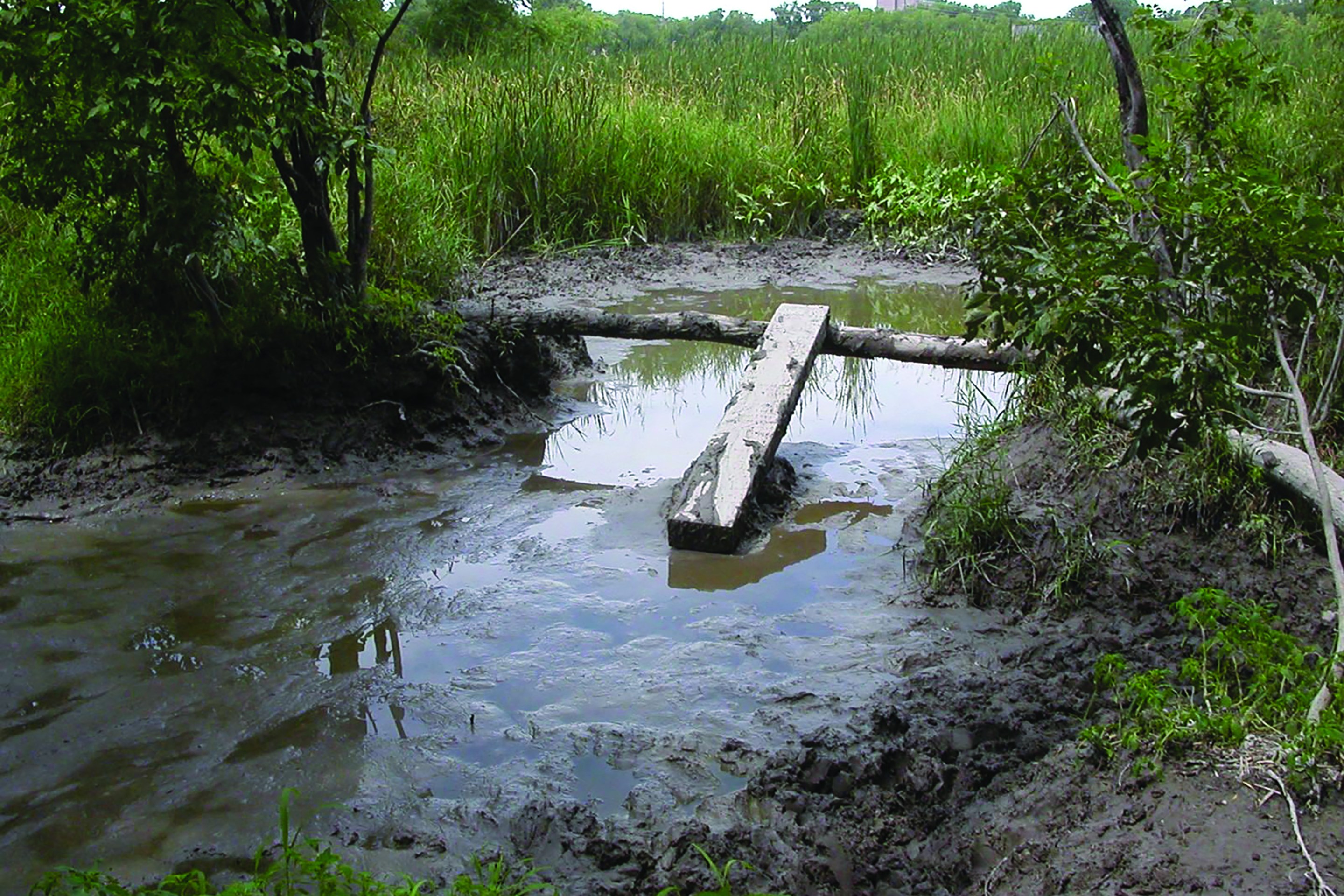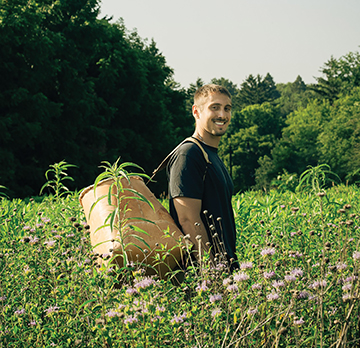To thrive, a prairie needs periodic controlled burning or it will revert to forestland. In the past, nature and Indigenous people performed this task. But in the present, it is up to the park board.
Most prairie experts recommend burning every two to three years. Unfortunately, the Cedar Lake Prairie has not been burned in over seven years.
During that time, many noxious invasive-species plants have taken over large parts of the prairie. And invasive trees, such Russian elm, cottonwood and gray dogwood have sprung up. (There is, of course, a need for trees in the Minneapolis canopy — but not in a prairie.) These invasives threaten the health of the prairie.
Fortunately, fire is on the way.
The park board designated the Cedar Lake Prairie as a high-priority area. In 2022, the park board started brush-clearing shrubs, including aggressively invasive sumac that has threatened to take over large swaths of the prairie. In 2023, it used herbicide spot treatments to eradicate large clumps of noxious crown vetch.
In the summer of 2023, park board staff walked the prairie with a volunteer from CLPA to discuss the overall condition of the site. During the walk the staff member detailed MRPB’s plan to begin a rotational burning of one-third of the prairie starting in 2024, with another third burning in 2025 and a final third burning in 2026.
Of course, the schedule is contingent on several factors, since burning such a large section of prairie can be done only under optimal weather and soil conditions: not too windy, not too wet, not too dry. But CLPA was delighted to hear that the area has been prioritized and the burns tentatively scheduled.
The Cedar Lake Prairie is a gem. The Cedar Lake Park Association envisions the prairie flourishing for the next hundred years and beyond — for future generations to enjoy. Now there is a plan and schedule in place to make that vision a reality.
How did the prairie come to be?
The Cedar Lake Park Prairie is composed of a swath of reclaimed land just north of Cedar Lake. Once the domain of the Burlington Northern (now BNSF) Railroad, it was a flat, bare space with ribbons of tracks lining the corridor. Due to redundancy, the railroad decided it no longer needed the rail yard and in the mid-1980s it pulled up the tracks and put the acreage up for sale.
Some thought the best use of the land would be to build condos on it, but a group of citizen-activists thought differently. They banded together to “Save Cedar Lake Park.” It did not faze them that Cedar Lake Park didn’t technically exist for them to “save.”
They named it and claimed it. They raised funds and awareness, vowing to “Nurture Nature” and transform this barren piece of land into a nature park. Their message was simple: “Who doesn’t love a park?”
And they were successful.
In 1991, the park board purchased a total of 48 acres from Burlington Northern with $1.2 million in public funds and $500,000 in private funds raised by the Cedar Lake Park Association (CLPA). The purchase included a small section of forestland, as well as a wedge-shaped area that has become the largest prairie in the Minneapolis park system.
The land was contoured and planted in 1995 in conjunction with construction of the award-winning Cedar Lake Regional Trail. Since 1998, volunteers from CLPA — under the auspices of the park board — have supplemented the original prairie plantings with over 20,000 native-species grasses and flowers.
The result has been a proliferation of butterfly weed, prairie smoke, leadplant and many other pollinator-friendly flora. The view from the prairie is spectacular, as seen in this photo.






